The original is on the site KompyuFerra
Bernd Widmann (Bernd Wiedmann) worked as general manager in the company of Xybernaut, which supplies portable computers, so it is a sample of his iron just brought a sort of pun to the Editor. In fact, he appeared - with German punctuality exactly at the agreed one month prior to this time - with a suitcase of goods, some of which aytemov getting any at appropriate moments, and formed by the end of a conversation at an editorial desk a hefty pile. - Mobile Assistant is primarily intended for use where up to an ordinary computer - even scratchpad - hard to reach. Such a device is much more convenient if you creep under the bridge to check its condition, or you climb on a crane, and see how it broke. If you chinish machines or check the status of the pipeline, the laptop is usually nowhere to put too.
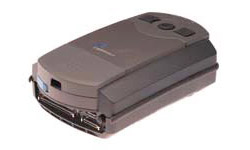 |
| The processing unit MA IV |
While Widmann all this tells me polutorakilogrammovy fasten a belt with "Mobile Assistant" and wore a headband with a headphone, microphone and display (for detailed specifications, see the table at the end of the material). Widmann presses a button, and before his right eye, I have a semi-ghost-booting Windows 98. Half of our conversation, I still will sit there, eyes periodically by focusing on the screen, then at his companion, and - visually - not feel uncomfortable, though after a while tired of the headband. Ergonomics. Meanwhile, Kozlowski, meticulously glance at the attached replicator with a bunch of different ports, is, apparently, is pleased: "All there is, and if something does not attach itself to blame." In support of Widmann gets a whole heap of communication PCMCIA-prilad.
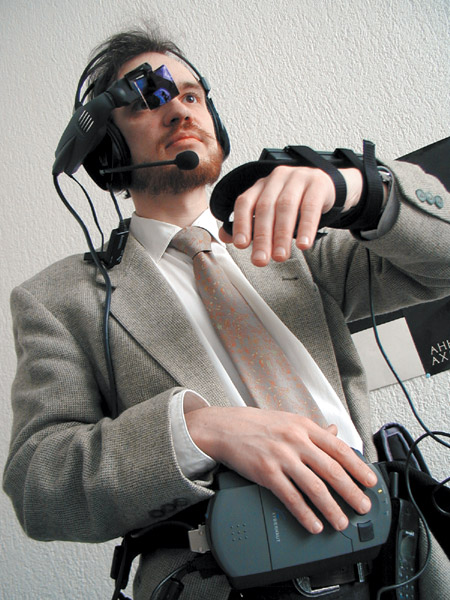 |
| Mobile Assistant IV in the collection |
- In the office, you can use a regular Ethernet, a short distance - RadioLAN, and on the spot - GSM. I do send mail, while I was in Nizhny Novgorod. About having not fully portable form replicator Widmann explained that the connector can attach smaller replicators to meet specific needs: USB only or two serial ports, etc. In Xybernaut has offices in America, Europe and the East. I ask about the target end-uses of their products. - It's manufacturing and communications industry. There are companies that sell equipment worldwide. Imagine what service the car anywhere in Lebanon or Afghanistan. And so - you can take a picture and immediately sent her home, or to consult on the network, or learn how ...
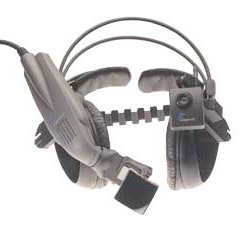 |
| Headband with an attached (right) video camera |
On the table there is a USB-camera mount for headband: Widmann instantly attaches it to the "Assistant" and starts some software to demonstrate in their work. - ... And while this is our main consumers. Also showing interest in new media (New Media): Journalists, sending messages to the places they want to use our equipment for live reports on the web. The resolution of the camera is not enough for the TV screen, but for Web-photo or video - at the time. I got used to the strange "mouse" and keyboard, he manage to run a video that tells about the happy owner of "assistant" with some American "Hammer and Sickle." Unable to stand, interested in the price of equipment workplace. - Prices from 3800 dollars in its basic configuration up to 7000 in full.In Russia, a number of industries can spend so much on the equipment of a workplace - from railroads and finishing services, rescue and gas industry: all those who service points scattered throughout the country, and the number of qualified specialists is very limited. Trained engineers are much easier to sit at home in Moscow and have three to four staff with basic skills, but do not know to perfection of a device. I try not to show doubt about the solvency of rescue services (the nearest of which there is no money even to buy equipment to retrieve a kitten from the garbage disposal), but still questioned how successful was the trip to the Lower and Moscow.
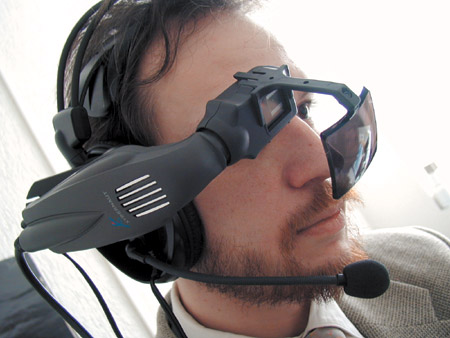 |
- The purpose of the first visit was to establish relations and meeting with partners for pilot projects. And - to find business partners who would want to install your software on our system and sell ready-made solutions. Some meetings were very encouraging: I showed the equipment and hear ideas about how it will go in this market. Now waiting for business proposals. We never engaged in direct sales, we are working with partners, as end users interested in complete solutions. - And what can bring a partner? - Specialized software is of two kinds. First, specific to particular industries and particular customers. Secondly, associated with speech recognition and text in Russian. Here are two important things we are lacking. Continue the conversation turns into a more interesting direction. When Widmann enjoys, in his excellent English speech appears intelligent light German accent. - I also met with software companies that do interesting things with animated tours, and labor training in virtual reality. What they do, applicable throughout Europe, and I'm always interested in finding a new technology - the software or hardware - which could be promoted in the West.
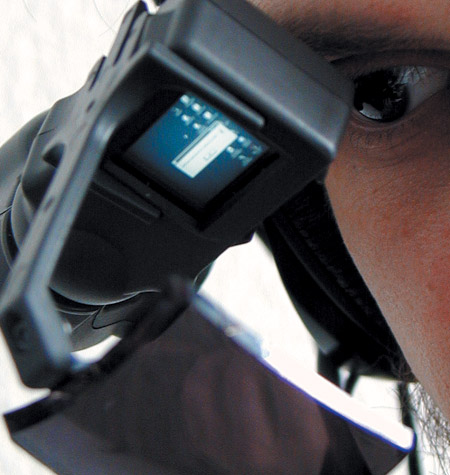 |
- OK, but until I see the normal desktop under Windows or under Linux. A positioning device requires a certain shift of the interface paradigm. Have any ideas? Widmann laughs: - It is on this issue we are working with more than twenty universities and institutes around the world. Now we have invested in the development of basic software that allow you to run a car, register to restore the state after the error, reboot, etc., with the voice, without a keyboard. We want to speech engine thrust deeper, into the nucleus.
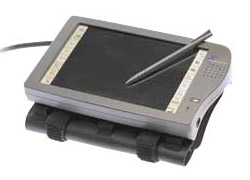 |
I hesitate to start the voice raspoznavalku. May crawl under a bridge in the headband and comfortable, but unaccustomed to half an hour in the room is already a burden, and I switch the output to a portable sensitive screen - it reminds me sprawling to the obscene Rex. Widmann explained that there is a "day" high-brightness display with which you can read in the sun, but it is heavier, so we did not bring it. - And we are actively cooperating with investigators in the field of applications that use location data (location-aware applications). So, combining global positioning, and image recognition from the camera, the device would know about where you are and what you are doing. And - what is the problem. Then it will be able to guide you, saying, for example: "You're at this point, but one has to go into that. To determine the route I'll show you a map on these points. And when you come into the room, I know the situation and can help you navigate within the that you took the correct position for inspection. "
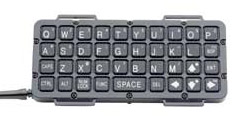 |
And yet ... Well, a little keyboard you saw, but on track it's not too convenient. We have other better ways to enter ... for example, gestures: "yes" or "no", "select", "photograph". We are working on how to use motion sensors. And here are important not so much technology as the proximity to the user and understanding his work. The machine will be with the user anywhere, it will continually wait for commands, and it is very important to make the interface as can be less intrusive. Perhaps this is best understood in the aviation industry. - And what about imaging? - That's why I mentioned the Russian company that creates a virtual environment, removing real and adding to it visual services. For example, you walk through the plant and see on the screen of this same plant with schematics or explanatory inscriptions and of themselves, walking on it ... - But it will have to make the device much more powerful? - Yes. We are working on the application of PIII 400, and we have left a powerful graphics chip. But I always have to choose between power and energy consumption, lifetime batteries. Now when using the system at full capacity battery lasts four hours, and at times you can hook the two batteries. Batteries - is the weight, and it limits. Other restrictions - is the weight of the hard drive with shock-resistant mounting. And - "Mouse" on the body, from which we may get rid of, because it is an alternative type tviddlerov. Widmann gets tviddler - it seems this latest gadget out of his suitcase. Tviddler goes on her hands, look at, feels and, despite protests from the host ("Never do not show what I myself have not used!"), In the end, connects to the "Assistant" and demonstrates a willingness to work. I notice that, although unusual, this device is quite possible to learn a couple of days. - Yes, I saw people who masterfully managed to him. * Then the conversation turned to just have an informal channel: we talked about possible scenarios for the use of wearable computers, the adequacy of the interfaces on the pace of their implementation and a lot about. Widmann found it necessary to emphasize that "Assistant" is basically a "normal computer" with all its pleasant consequences for the cost of software development.
The main characteristics of a computer Xybernaut Mobile Assistant IV
| Dimensions, mm | 190x63x120 |
| Weight "system unit", Mr. | 900 |
| Processor | Intel Pentium MMX 200 or 233 MHz |
| Memory, Mb | 64-160 |
| Hard drive | 4.3 (upgrade up to 8) |
| Audio | duplex SB-compatible chip |
| Interfaces | 2hCardBus Type I / II or 1xType III, the port replicator |
| Headband with display | monocular projection display VGA, headphone, microphone (optional) video camera, Weight 500 g |
| Hand display | 6-inch touchscreen VGA; weight 520 g |
| Food | Lithium-ion battery weighing 460 g; combined charger / external power supply |
| Accessories | video camera, mini-port replicator mouse and keyboard, as well as serial and parallel ports; replicator COM, LPT, USB, VGA, and keyboard port, audio input and output; nazapyastnaya keyboard, belt mount, slip case |
| Software | OC Microsoft Windows 95/98/NT, or SCO UNIX, or Turbo Linux; IBM ViaVoice and Dragon; Xybernaut LinkAssist |
Sources, Materials:
KompyuFerra
The authors, translation:
Maxim retired






